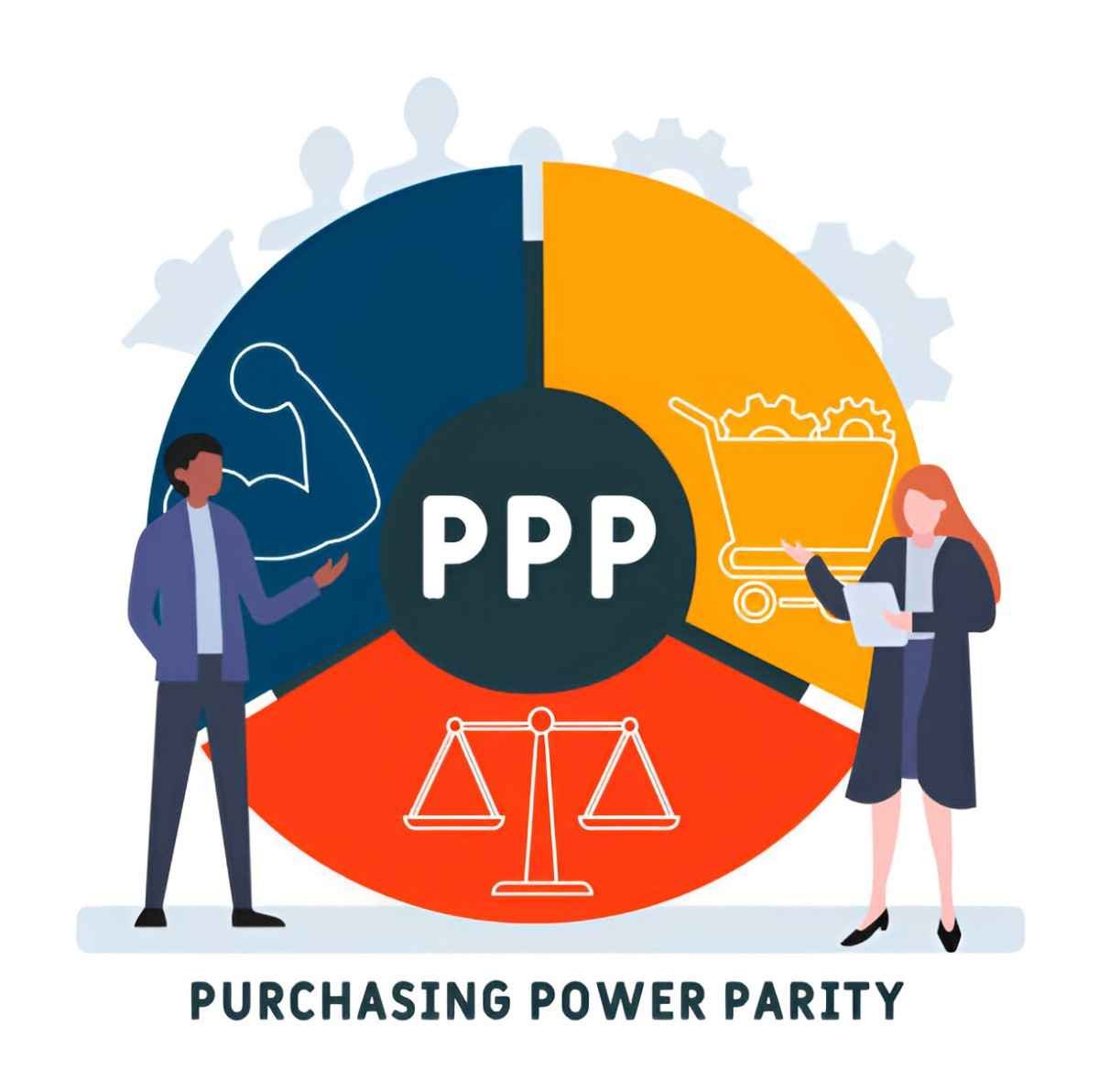Introduction
Purchasing Power Parity (PPP) is a foundational concept in international finance that helps compare the economic strength of different currencies by measuring their relative purchasing power. The theory suggests that exchange rates between currencies should adjust so that identical goods and services cost the same in different countries when priced in a common currency. This article will explore PPP in depth, covering its theoretical framework, mathematical formulation, applications in financial management, and real-world implications.
Theoretical Framework of Purchasing Power Parity
PPP is built on the idea that arbitrage forces in competitive markets should equalize the price of goods and services across countries over time. This principle is derived from the law of one price, which states that in the absence of transportation costs and trade barriers, identical goods should sell for the same price globally when expressed in a common currency.
PPP exists in two forms:
- Absolute PPP: This form states that the exchange rate between two currencies should be equal to the ratio of their respective price levels.
- Relative PPP: This form accounts for inflation differences, suggesting that the rate of exchange rate change should be proportional to the difference in inflation rates between two countries.
Mathematical Formulation of PPP
Absolute PPP
The absolute version of PPP can be mathematically expressed as:
E = \frac{P_1}{P_2}where:
- E = Exchange rate between two currencies (e.g., USD/EUR)
- P_1 = Price level in country 1 (e.g., US)
- P_2 = Price level in country 2 (e.g., Eurozone)
Relative PPP
The relative version considers inflation rates over time:
\frac{E_t}{E_0} = \frac{(1 + \pi_1)}{(1 + \pi_2)}where:
- E_t = Exchange rate at time t
- E_0 = Initial exchange rate
- \pi_1 = Inflation rate in country 1
- \pi_2 = Inflation rate in country 2
This equation shows that if inflation in country 1 is higher than in country 2, the currency of country 1 should depreciate relative to country 2’s currency.
Applications in International Financial Management
PPP has significant implications for international trade, investment decisions, and economic policy. Financial managers use PPP to forecast exchange rates, evaluate currency risk, and assess international pricing strategies.
1. Exchange Rate Forecasting
Financial analysts use relative PPP to predict long-term exchange rate movements based on inflation differentials. If the inflation rate in the US is higher than that in the Eurozone, the USD is expected to depreciate against the EUR.
Example Calculation: If the USD/EUR exchange rate today is 1.10, and the expected inflation in the US is 5% while in the Eurozone it is 2%, the expected exchange rate in one year would be:
E_1 = 1.10 \times \frac{(1 + 0.05)}{(1 + 0.02)} = 1.10 \times 1.0294 = 1.1323This means the USD is expected to depreciate against the EUR.
2. Currency Valuation and Misalignment
PPP is also used to determine whether a currency is undervalued or overvalued compared to its theoretical fair value. One popular method is the Big Mac Index, which compares the price of a McDonald’s Big Mac in different countries.
Table: Big Mac Index Example (Hypothetical)
| Country | Big Mac Price (Local Currency) | Exchange Rate (Market) | Implied PPP Exchange Rate | Over/Undervaluation (%) |
|---|---|---|---|---|
| USA | $5.00 | 1.00 | – | – |
| UK | £4.00 | 0.75 | 0.80 | +6.67% (Undervalued) |
| Japan | ¥600 | 150 | 120 | -20.00% (Overvalued) |
From the table, we see that the British pound is undervalued relative to the USD based on the implied PPP exchange rate.
Limitations of PPP in Practical Application
While PPP provides a useful theoretical framework, it has several limitations in real-world application:
- Market Imperfections: Tariffs, taxes, and import restrictions can distort price levels.
- Differences in Consumption Patterns: Goods and services are not perfectly identical across countries.
- Short-Term Volatility: Exchange rates are influenced by speculative capital flows, interest rates, and economic policies.
Conclusion
Purchasing Power Parity remains an essential concept in international finance, helping economists and financial managers understand exchange rate behavior and currency valuation. While it provides a long-term perspective on currency values, short-term deviations can occur due to economic and market factors. By understanding PPP, financial professionals can make more informed decisions regarding foreign exchange risk, investment strategies, and global pricing policies.





